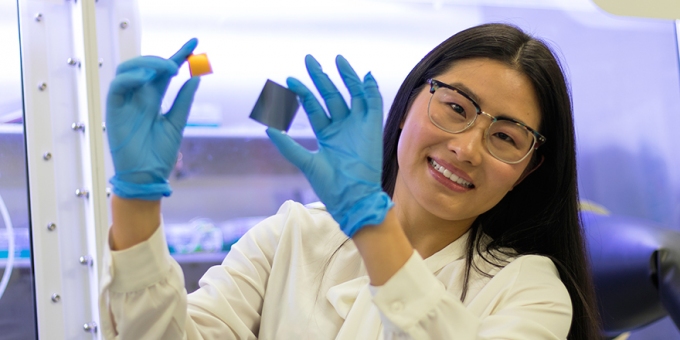Imagine generating clean electricity through highly efficient, flexible solar panels attached to your everyday personal items and devices. Charging your phone could be as simple as connecting to a small solar panel on your backpack, bike or even your hat.
According to a team of researchers at the Australian National University (ANU), this technology may not be too far away.
Solar cell innovation
Current photovoltaic research remains focused on the goal of producing low-cost, highly-efficient solar cells by exploring new materials and techniques.
For more than two decades, the most broadly commercialised solution has been the single-junction silicon solar cell, and although this technology is widely used, it has significant limitations. The solution does not use the blue light of the spectrum efficiently with excess energy lost as heat, and its thick, wafer-like structure is a limiting factor in the construction of flexible or portable devices.
Advanced materials and techniques
To address these limitations, researchers at the ANU are working with advanced thin-film materials using a tandem design technique.
The tandem technique mechanically combines two light absorbing cells, layered to maximise efficiency in the absorption and conversion of sunlight to energy. The structure and composition of each thin-film cell is optimised to absorb a particular portion of the light spectrum – something that the single-junction silicon cell cannot achieve on its own.
In a recently published paper, Dr Heping Shen and her team from the ANU Research School of Electrical, Energy and Materials Engineering reported that thin-film tandem cells of Perovskite and Copper Indium Gallium Selenide (CIGS) achieved an efficiency of 23.9 per cent. To date, this is a world record result for all thin-film tandem solar cells.
With further optimisation Dr Shen believes a 30 per cent is achievable – with even higher theoretical predictions being made.
“Once we achieve higher efficiencies this could pave the way for more cost-effective and flexible panels. We could then see panels not only on houses and buildings, but on cars or even personal devices, giving us the opportunity to generate electricity everywhere,” Dr Shen said.
Professor Kylie Catchpole, lead researcher from the ANU Research School of Electrical, Energy and Materials Engineering is optimistic about the future of this technology.
“While there are still challenges with the stability of the perovskite technology, our research is demonstrating that these can be overcome. For example, these cells showed not only high efficiency, but much better stability in air than previously used materials,” Professor Catchpole said.
With 30 per cent efficiency an achievable goal, this milestone represents a major leap forward in the field of nanotechnology for solar cell innovation — opening the door to future development in photovoltaic technologies.
Link to paper: Mechanically-stacked perovskite/CIGS tandem solar cells with efficiency of 23.9% and reduced oxygen sensitivity†

